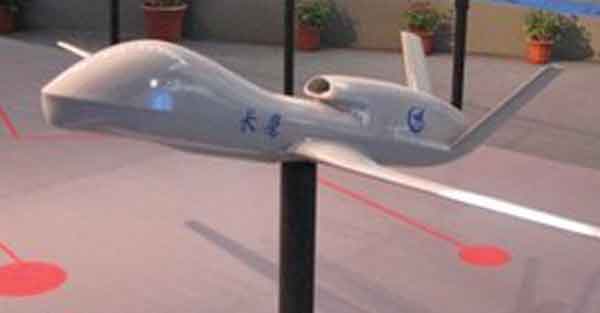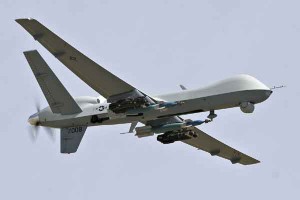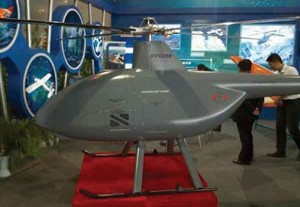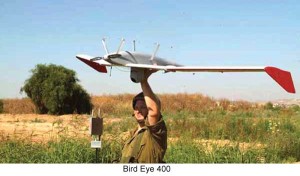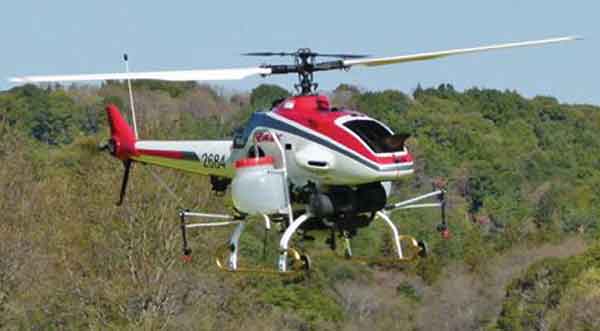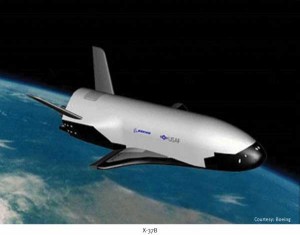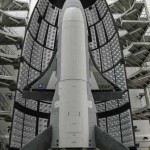China’s massive UAV developmental work has unhealthy implications for India. Soon Chinese capability will be of the latest standard and massive in size. If and when integrated in a manner similar to the Americans, the Chinese will have great knowledge of battle space. The Himalayan terrain is such that it is not easy to conceal and camouflage effectively. The stealthy nature of newer UAVs will make it difficult for India to intercept them.
Research into Unmanned Aerial Vehicles (UAVs) in China began in the late 1950s. Around this time, USA flew UAVs over China to gather intelligence. In fact, one of the first Chinese UAV was partially developed by reverse engineering the American UAV that was lost over China. The development effort increased in the second half of the 1960s and by the 1980s had grown into three series of products i.e. the Chang Kong 1 drones, WZ-5 high-altitude UAV and small remotely controlled D4s. The UAV design and research organizations were founded in NAI, BIAA and NPU Universities. While UAV programmes in China originally were based on US and Russian designs, today the Chinese researchers are producing original and innovative designs for mini, micro, Vertical Take-off and Landing (VTOL) and flapping-wing UAVs.
China’s military has limited capability and experience with UAVs to date…
With the success of UAVs in recent conflicts, China is looking to position itself as a major user and exporter of UAVs. China’s research and development centres, especially Xian’s Northwest Polytechnic University (NPU), and the Beijing and Nanjing Universities of Aeronautics and Astronautics, have active UAV developmental programmes. The others are the Beijing Technology Company, Beijing University of Aeronautics and Astronautics, China Aerospace Science and Technology Corporation (CASC), Hebei Electric Power Reconnaissance Design Academy, North Western Polytechnic University, Shaanxi Engine Design Institute and Xian ASN Technology Group Company.
China has also acquired UAVs from outside. In 1994, Israel’s IAI Malat sold Harpy UAVs to China and in May 2006, the former was accused of again selling Sparrow UAVs. In August 2006, Japan’s Yamaha Motor Company was accused of selling the RMAX helicopter UAV to Beijing Technology Company which has ties to the Chinese People’s Liberation Army (PLA). The Japanese military, for example, used the RMAX in Iraq for surveillance. Another report said that Yamaha exported 11 UAV helicopters to Beijing’s Poly Technologies and to Beijing Technology Company, both of which also have ties to the PLA.
China is creating an entire production ecosystem for business and GA aircraft…
China’s military has limited capability and experience with UAVs to date. Consequently, the practical application of UAV sensor information to battlefield operations is only in the developmental stage. China’s armed forces have operated the Chang Hong (CH-1) long-range, air-launched autonomous reconnaissance drone since the 1980s. China developed the CH-1 by reverse engineering the US Fire-bee reconnaissance drones recovered during the Vietnam War. An upgraded version of the system was displayed at the 2000 Zhuhai air show and is being offered for export. A PRC aviation periodical reported that the CH-1 can carry a TV, daylight still or infra-red camera.
ASN Technology Group, the biggest specialised UAV R&D Company in China, designed and manufactured the first UAV in China in 1958. In the following fifty years, over 40 different types of UAV were manufactured and in total, over 1,500 UAV have been delivered by ASN. A concept model of China’s new UAV named ‘Anjian’ (Dark Sword) was displayed at the 47th International Paris Air Show in 2007. The aerial combat vehicle was designed by the Shenyang Aeroplane Design Institution under China Aviation Industry Corporation (CAIC), for future aerial combat. The Tian Yi began testing in 2009, as Chengdu’s step toward a future Global Hawk class HALE UAV.
Richard Fisher, a UAV specialist, commented in 2010 that at the 2000 Zhuhai air show, the Guizhou WZ-2000 was revealed. It was a squat twin-jet powered delta winged high-altitude long-endurance UAV, which, by the 2002 Zhuhai show, evolved into a medium-sized UAV, and by the 2008 Zhuhai show, appeared to form the basis for an armed turbofan powered Unmanned Combat Aerial Vehicle (UCAV) similar in size to the US General Atomics MQ-9 Reaper. “Since the 2006 Zhuhai show there appears to emerge a rough division of labour, in which Chengdu and Guizhou concentrate on medium and long range surveillance UAVs and medium-range UCAVs, while Shenyang appears to be concentrating on future long range subsonic and supersonic UCAVs.
The 2006 Zhuhai air show saw the revelation, in model form, of Chengdu’s Tian Yi, which was revealed by internet sources in 2008 to have entered testing. While it is likely to be useful as a medium-range UAV, the Tian Yi also serves to aid the development of Chengdu’s Long Haul Eagle, which is close in size and configuration to the Northrop Grumman Global Hawk. In 2006, Guizhou revealed in model form, its box-wing Soar Dragon UAV, credited with a 7,000km range but there has been no subsequent information on this system.” Also, Shenyang Corporation created a stir by introducing in model form its Dark Sword supersonic UCAV, about which Shenyang has revealed very little. It was described in a small plaque as a ‘fighter’.
There has been some suggestion that this design may have been inspired by South African technical assistance. A new model of the Dark Sword was revealed as part of the 2009 PLAAF Anniversary, an indication that it remains an ongoing programme. At the 2008 Zhuhai air show the forward-swept wing subsonic Warrior Eagle was revealed, also likely a Shenyang programme. This concept appears to be a more realistic goal technologically, if one considers it is well-suited for attack and surveillance missions.1
The known Chinese UAVs, 35 in number, are listed subsequently. As is generally the case, the list of known UAVs far exceeds the ones in service use. The known list includes all developmental efforts and only the highly successful models find their place in Services for operational use. While much is not known about Chinese armed forces with a degree of certainty, we need to factor in the following inputs in trying to forecast Chinese capabilities. We should not think about Chinese aerospace development in exclusively linear terms. Acquisitions that leverage strong Chinese balance sheets and weak western markets can change the dynamics in a disruptive fashion even in an industry with high entry barriers like aerospace.2
In 2009, Avic acquired Fishers Advanced Composite Components, a leading European aero structures supplier that addressed China’s weakness in advanced materials and complex mechanical systems. It followed with the purchase in 2010 of Epic Air, an Oregon–based general aviation kit aircraft manufacturer and in 2011 of Continental Motors the second largest manufacturer of piston engines. But it was the acquisition of Cirrus, an iconic general aviation aircraft manufacturer, which caught the industry’s attention. Cirrus has delivered nearly 5,000 new pistons airplanes – including the best-selling SR 22 family. Add to this, in-country production facilities for Cessna and Diamond aircraft models, as well as an Embraer regional jet production facility in Harbin, and it is clear that China is creating an entire production ecosystem for business and GA aircraft.3
The Chinese industry is supported by excellent infrastructure, abundant funding and a large workforce…
The Chinese industry is supported by excellent infrastructure, abundant funding and a large workforce which has been graduating from low-tech towards high-tech. Frugal engineers at some companies are devising technologies that are cheaper and sometimes better than their rich world equivalents.4 The Chinese government invests a fortune in research and development. By 2020, the Beidou global positioning and navigation systems, a set of 35 satellites equivalent to America’s Global Positioning System, should be in place.5 This would enable Chinese UAV/ISR system their own secure navigation and positioning system.
China’s standard means of forcing technological transfer in any industry is to make it a condition of market access. Israel Aerospace Industries (IAI) is in talks with Avic Aviation Techniques (AAT) of China for collaboration for business jets. If it also transfers UAV related technologies, it will not surprise anyone. IAI has produced many successful UAVs namely Mosquito, Bird Eye 400, Bird Eye 650, Heron I, Heron TP and Eitan. Another major factor has been substantial industrial reforms in the 1990s. The 1998 reforms were more successful and meaningful compared to earlier cosmetic reforms. New incentives including competitive bidding were introduced by Jiang Zemin. The reforms were more market-oriented, encouraged competition and were less reliant on state subsidies. Twenty per cent of the work force comprising two and a half to three million was laid off. Close cooperation with Russia for the fourth generation fighter, with Israel for aircraft and air to air missiles and with France for air to air and air to surface missiles improved aerospace industry.6 Bantly Company producing B–2, a two-seat compact helicopter based in Wichita, USA went bankrupt in1960s. In 1994, a Chinese partnership bought the assets out of bankruptcy and in 2007, the company was acquired by a joint venture between Weifang Tianxiang Technology Group and the People’s Republic of China, the same group that acquired Superior Air parts in 2010. The new owners closed the plant in USA and relocated it to China. There they modified this two seat B–2B helicopter transforming it into the V-750 Unmanned Aerial Vehicle.7
Current Status And Future
PLA’s ambitious UAV development covers the gamut from micro to tactical to strategic, and could soon include stratospheric space air ships and hypersonic platforms. At the third biennial vanguard UAV exhibition in June 2010, 70 UAV related companies displayed their wares. At the November 2010 Zhuhai air show, 25 indigenous UAVs were shown. This is a record number for a country that showcased its first concept UAV only four years ago. Continued development of so many types of UAVs simultaneously supports the PLA’s strategy of Information Warfare/Informatisation. There is considerable interest in near space or stratospheric UAVs. A lot of research is directed towards this concept. Also finding prominence in research is developments of hypersonic UAVs/UCAVs for near space; Earth orbit missions. In 2007, Chinese sources revealed the Chengdu Shenlong, a small space plane about the same size as the Boeing X – 37B space plane.8
PLA’s ambitious UAV development covers the gamut from micro to tactical to strategic…
What is significant about Chinese effort in UAVs is the all across development from micro to stratospheric models; the number of aviation companies and Universities involved and the pursuit of technology that is considered future of military aviation. Some of the models are designed to fire air to ground missiles. The latest, most ambitious programme is the WJ 600, details of which are placed at the end. However, no precise details are available as to which of the UAVs are fully operational. The lists towards the end show all the models developed so far and the list of UAVs in use with PLA and PLAAF. The development of HALE and MALE is to enable long-range ISR and strikes coupled to Chinese Beidou GPS. This long range capability will be free of US GPS. While the Chinese UAVs are still behind US and Israeli UAVs in performance, the noteworthy fact is the rapid pace at which China is trying to reduce this gap.
Undoubtedly, Israel has helped in this race, starting with the sale of the Harpy anti-radar killer UAV in 1994 to the fury of Pentagon which has since blocked the Israelis from providing upgrades.9 China has also converted old fighters namely the J-5, J-6 and J-7 into UAVs for use as targets. Possibly up to 300 J-6 could be launched on one way missions against Taiwan.10 Modern integrated warfare in which the American and Israeli forces excel cannot be learnt in isolation. It is the result of evolutionary learning tested and refined time and again under war conditions. This means China’s operational concepts are likely to remain far from perfect for a long time to come. We must then see the use of UAVs by Chinese in this light.
China’s massive UAV developmental work has unhealthy implications for India. Soon Chinese capability will be of the latest standard and massive in size. If and when integrated in a manner similar to the Americans, the Chinese will have great knowledge of battle space. The Himalayan terrain is such that it is not easy to conceal and camouflage effectively. The stealthy nature of newer UAVs will make it difficult for India to intercept them. We need fighters with AESA radar to be able to intercept Chinese UAVs. We will need to find the UAV bases and attack them on the ground. We need a massive investment in our own ISR assets and more important in DATA FUSION architecture. This is one area where we have a slight lead but need to work vigorously in making it really centralised and networked.
Chinese UAVs in Service11
Wikipedia has listed a total of 35 Chinese UAVs. The UAVs in service are listed below:
PLA
- ASN – 15 (hand-launched)
- ASN – 104
- ASN – 105
- ASN – 206
- W – 50
- WZ – 5
- D – 4 NPU (Xian NPU)
- WZ – 6 BZK – 006 & BZK – 005
PLA-AF
- CH – 1 Chang Hong
- Chang Kong – 1
- BQM – 34 Fire bee
- Harpy
(In the table given below, data on all the UAVs in China has been complied by analysing reports in Aviation Week & Space Technology, Wall Street Journal, Jane’s World’s Air Forces and Wikipedia)
Chinese UAVs
| Name | Manufacturer | Role | Remarks |
| Chang – Hong 1 | CAF | Multi | Sensors include TV, IR & Still cameras. The next version CH – 3 is armed with AR – 1 ground attack missile. |
| Tian Yi | CAC Changdu | HALE | Similar to Global Hawk in design but 2/3rd its size. Year 2008. |
| Chang Kong – 1 | Heavy | ||
| Long Haul Eagle | CAC Changdu | HALE | Similar to Global Hawk. |
| Soar Eagle/Dragon | GAC Guizhou | HALE | Weight 7500kg.Box wing configuration.
Payload 650kg. Range – 7000km. Span – 25m. Synthetic Aperture Radar likely. Year – 2006 |
| Pteroductyl –1 | GAC Guizhou | MALE/ UCAV | Appears similar to US Predator in size. Has 20 hours endurance. Armed with Norinco BA–7 optically guided missile. Shown in Nov 2010 Zhuhai air show. Unconfirmed reports of in service. |
| Warrior – Eagle | SAC Shenyang | UCAV | A subsonic turbofan UCAV with forward swept wing. Year – 2008. |
| Anjian/ Hidden – Sword/ Dark Star | SAC Shenyang | UCAV | Stealthy, supersonic for anti – air missions. Single engine with a raked under slung intake, delta wings and twin stabilizers. Fire bee type UAV. Continues in service. |
| ASN – 105ASN – 106 | ASN | Medium | In service with Army. |
| ASN – 206 | ASN | Medium | Truck launched; Range 150km; 6-8 h endurance. In use with Army to support long range strikes by PHL03-300 mm multiple rocket system. |
| WZ – S | Heavy | ||
| BZK – 005 | Heavy/HALE | Similar to Israeli Heron, twin boom, pusher piston engine. Payload 150kgs. | |
| ASN – 104 | ASN | Light | |
| W – 50 | Light | ||
| WZ – 6 | |||
| BZK – 006 |
Chinese UAVs: Under Development
Micro UAVs/Tactical UAVs
| Name | Manufacturer | Weight | Remarks |
| Whirl –Wind Scout | AVIC | 8 kg | Ducted fan, vertical take-off model. 20-40 min endurance. Year 2010. Navigation up to 100 way points. Similar to Honey Well’s ducted fan UAV. Ceiling 3000m, cruise 60km/h. Man Sp – 90km/h. GPS/INS guided. Perch & stare. Noise 60dBA. |
| ASN – 211 | ASN | 220gms | Large duck size. 30 cm wing span, has flapping wings. Hover and take off vertically. 200m ceiling. Speed 10m/sec. |
| W – 1 | 1.75kg | Electric powered. Hand launched. Lap top controlled. 1 hr endurance. | |
| ASN – 15 | 6.5kg | Hand launched. PLA trials on. | |
| W-50 | Nanjing Research Inst | 100Kg | 4-6 hrs endurance. Year 2000. In use with PLA. |
| U-8E | 220 Kg | 4 hrs endurance. Year 2006. | |
| Servi-Helo | 120 Kg | Vertical take-off UAV. 1.5 hrs endurance. | |
| Blue Arrow UR-JI-001 | Zhuhai X.Y.Aviation | 200 Kg | Three prototypes under testing with German prop-driven engines. |
| Sky Eyes UR-CZ-008 | Zhuhai X.Y.Aviation | 40 Kg | Two prototypes under testing. |
HALE / MALE UAVs/UCAVs
| Name | Manufacturer | Weight | Remarks |
| Soar Bird LE – 300 | 900kg | Similar to Northrop Grumman Fire Scout. Vertical take – off UAV. | |
| CH – 3 | CASC | Uses a canard similar to US home built aircraft –Vari-eze. Has ‘12-hour endurance’. Armed with FT- 5 small Sat-nav guided bomb & AR – 1 optically guided missile similar to BA- 7. Shown in 2008 Zhuhai air show. Pakistan is testing a version of CH – 3. EW capable. | |
| WZ – 2000 | Guizhou – Chengdu | HALE | Twin engine turbo-fan UAV. Delta design. Resembles Global Hawk. Year 2002 |
| Dark Sword | UCAV | Year 2006 | |
| ASN – 229A | ASN | UCAV/800kg | 5.5m long. Range 2000kms.‘20-hour endurance’. Satellite data links.
Cruises at 180km/h. Has air to ground missiles. Day & night capable. |
| WJ – 600 | CASIC | UCAV | Jet engine. Carries air to ground missiles. Target data relay. Synthetic Aperture radar. EW systems. KD – 2 air to ground msl Similar to Hellfire. Also on show were two unidentified weapon systems namely TB1 & ZD1. |
Innovative New Chinese UAV –WJ 600
The latest UAV pictures from China show a UAV with a joined wing and tail that could considerably increase range and payload. Analysts are suggesting that the new Chinese UAV design — with its 60,000-ft. cruising altitude, 460-km radar surveillance range and low radar reflectivity if it uses the right composite structure — could serve as the targeting node for China’s anti-ship ballistic missiles. This UAV, most likely Chengdu Aircraft Corporation’s (CAC) production, shows a new design featuring a novel joined-wing layout. In the same size class as the General Atomics-Aeronautical Systems Inc.
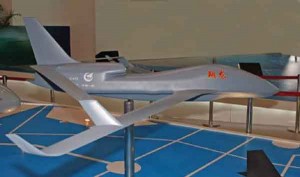 Avenger, and powered by a single turbofan engine, the new UAV is the most advanced Chinese design seen to date and the largest joined-wing aircraft known to have been built. CAC officials say it has a wingspan of 75 feet, length of 45 feet and a cruise altitude of 55,000-60,000 feet. Its take-off weight is 7,500 kg with a 6,800 km range. The company also makes a Global Hawk-like maritime reconnaissance UAV called the Xianglong, or Soaring Dragon, which flew in December 2009. The fore-body is bulged to accommodate a high-data-rate satcom antenna. Joined wings, a sub-set of closed-wing systems, comprise a sweptback forward wing and a forward-swept aft wing.
Avenger, and powered by a single turbofan engine, the new UAV is the most advanced Chinese design seen to date and the largest joined-wing aircraft known to have been built. CAC officials say it has a wingspan of 75 feet, length of 45 feet and a cruise altitude of 55,000-60,000 feet. Its take-off weight is 7,500 kg with a 6,800 km range. The company also makes a Global Hawk-like maritime reconnaissance UAV called the Xianglong, or Soaring Dragon, which flew in December 2009. The fore-body is bulged to accommodate a high-data-rate satcom antenna. Joined wings, a sub-set of closed-wing systems, comprise a sweptback forward wing and a forward-swept aft wing.
Notes
- Global Security.Org
- Aviation Week & Space Technology, January 2, 2012, p. 58.
- Ibid. p. 58.
- The Economist, March 10, 2012, p. 17.
- The Economist January 7, 2012, p. 70.
- Rand, “Analysing Chin’s Defence Industry and Implications for Chinese Military Modernisation” Evan S. Medeiros, Feb 2004.
- AW&ST Sep 12, 2011, p. 20.
- http://www.aviation week.com/aw/jsp-includes/articles. China seeks Seeks UAV Capability, Richard D Fisher.
- The Wall Street Journal, “China’s New Drones Raises Eyebrows” Jeremy Page-http://online.wsj.com/article/SB 100014240527487033743045756….1/1/2007.
- Jane’s World Air Forces ISSUE 34-20111, p. 135.
- Military Balance 2010, pp. 376-405.




